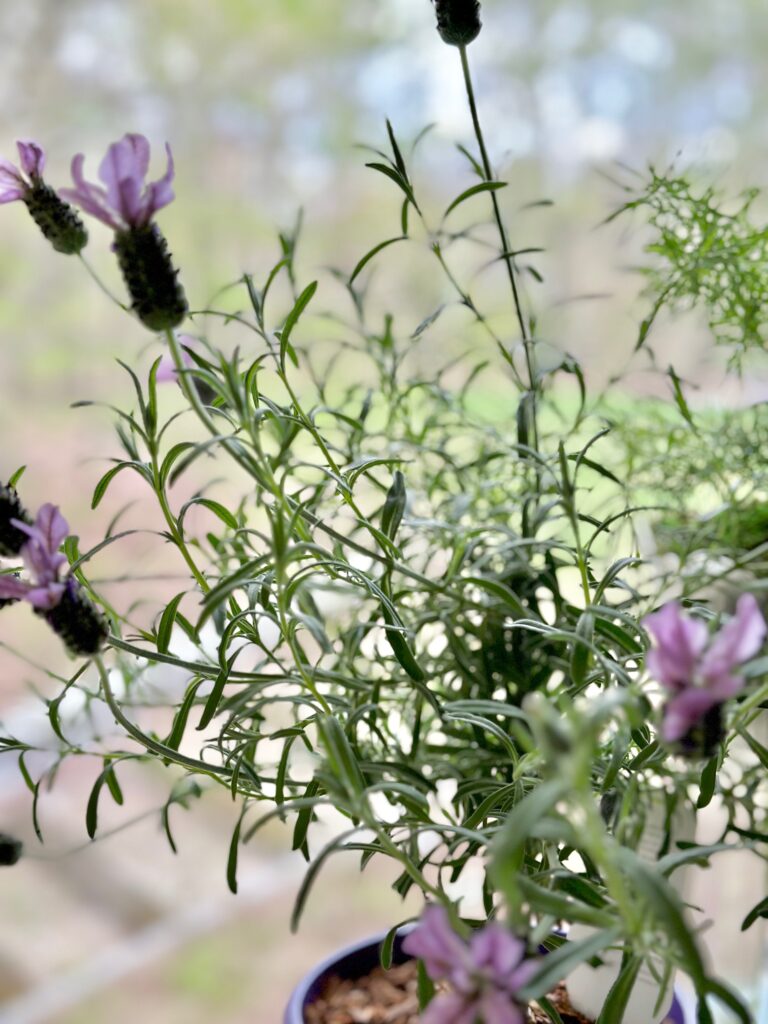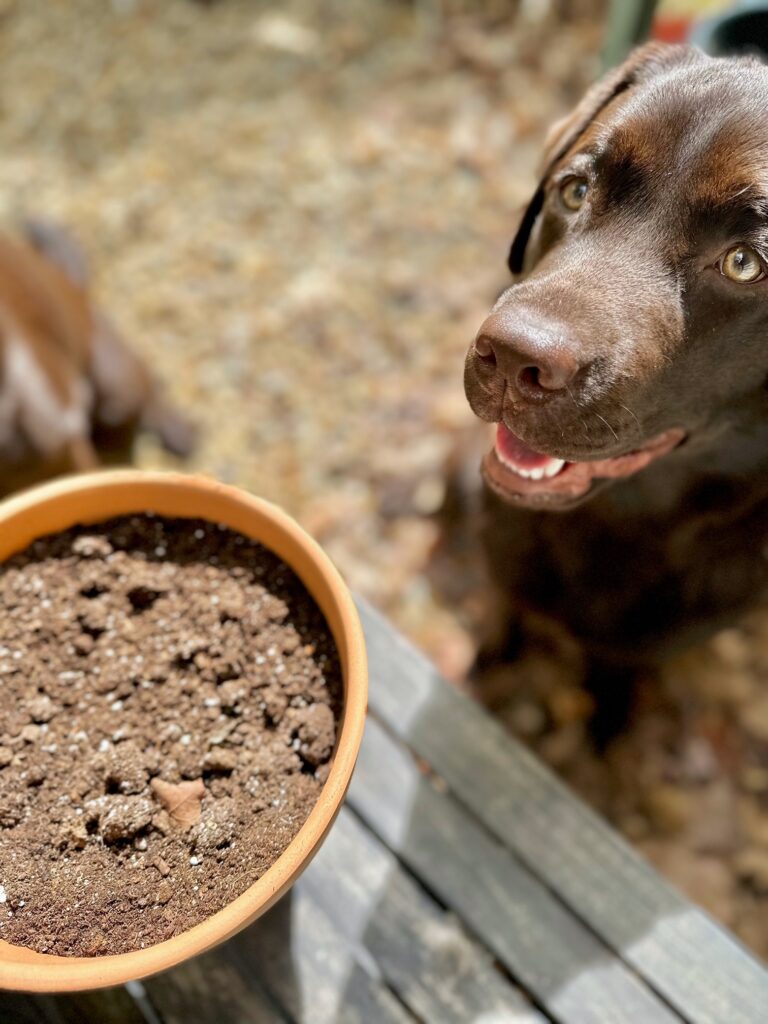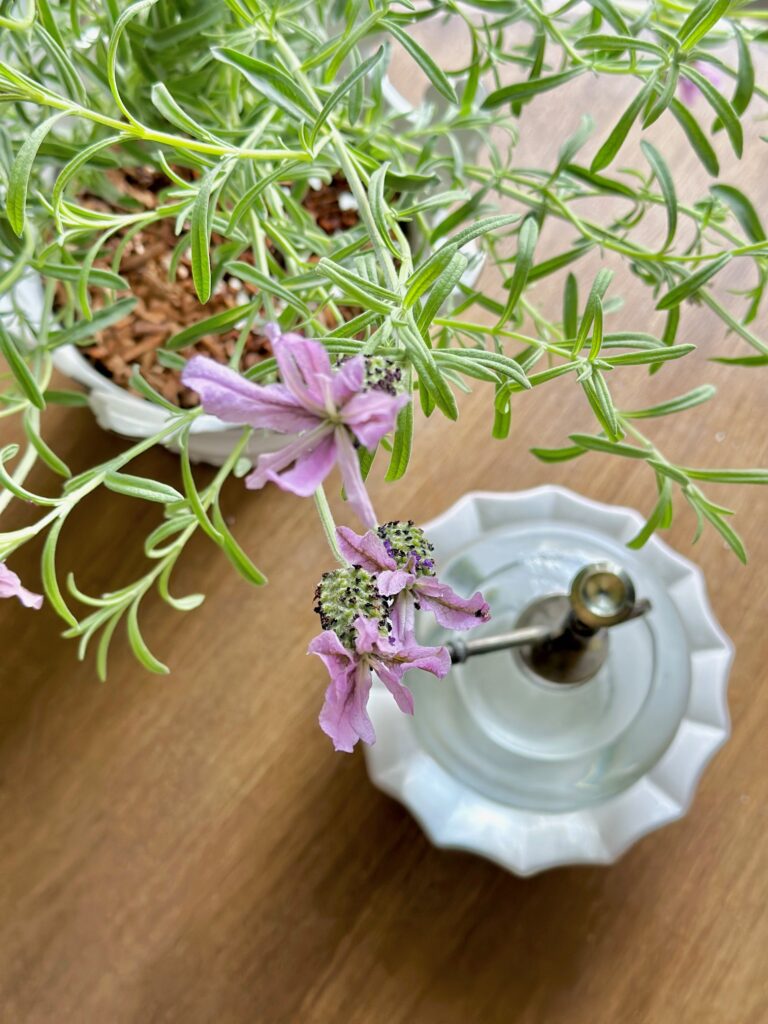The Ultimate Guide to Lavender Fertilizer Requirements
Are you curious about the best ways to keep your lavender plants looking their best? Well, you're in luck because today we're talking all about fertilizers for your lavender!
Let's be honest, taking care of lavender plants can be a bit of a challenge, but with the right fertilizer, you can keep your lavender plant or plants blooming and smelling amazing all year round. In this post, we'll dive into the different types of fertilizers out there, from organic to synthetic, and break down the pros and cons of each.
But that's not all! We'll also share some insider tips on how to properly feed your lavender plant and answer some of the most common questions about lavender care. Trust me, by the end of this post, you'll be a lavender fertilizing pro enjoying those fragrant flowers!

Content may contain affiliate links. When you shop the links, we receive a small commission at no cost to you. Thanks for supporting my small business.
Are Fertilizing Needs the Same for Different Lavender Varieties?
When it comes to fertilizing different varieties of lavender plants, the good news is that their needs are generally the same. Whether you're growing English lavender (Lavandula angustifolia), French lavender (Lavandula dentata), or Spanish lavender (Lavandula stoechas), these Mediterranean herbs prefer lean, well-draining soil and minimal fertilization.
Spanish Lavender and Soil Fertility Tolerance
Spanish lavender tends to be slightly more tolerant of rich, fertile soil compared to English and French lavender varieties. This means Spanish lavender may handle slightly more frequent fertilization without becoming overly leafy or suffering reduced flower production.
English Lavender’s Sensitivity to Fertilizer
English lavender is known for being particularly sensitive to over-fertilization. It’s important to be cautious when applying fertilizer to this variety. Stick to recommended rates and frequency to avoid potential issues.
General Fertilizing Guidelines for Lavender
Despite minor differences, the general rule of thumb for fertilizing lavender is: less is more. Providing your lavender plants with a slow-release, balanced fertilizer once or twice a year should be enough to keep them healthy and thriving.
Monitoring and Adjusting Fertilization
Always watch your plants for signs of nutrient deficiencies or overfeeding. Adjust your fertilization routine accordingly to keep your lavender flourishing.

Indoor vs. Outdoor Lavender Fertilizer Requirements
Both indoor and outdoor lavender plants share similar basic fertilizing needs, but there are important differences depending on where they grow.
Fertilizing Indoor Lavender
Indoor lavender plants, including beautiful lavender trees typically grow in containers with limited soil volume, which means nutrients can be depleted more quickly resulting in nutrient-poor soil. As a result, indoor lavender plants may require more frequent fertilization than their outdoor counterparts. However, it's essential to use a weaker strength fertilizer solution to avoid over-fertilizing, as this can lead to salt buildup in the soil and damage the plant's roots.
Fertilizing Outdoor Lavender
On the other hand, outdoor lavender plants grown in a herb garden have access to a larger volume of soil and can benefit from the natural nutrient cycling processes that occur in garden beds. They may require less frequent fertilization, especially if they are growing in well-amended soil. Outdoor lavender plants may also benefit from the occasional application of compost or well-rotted manure to help replenish soil nutrients and improve soil structure.
Key Tips for Fertilizing Lavender Anywhere
No matter if your lavender is indoors or outdoors, follow recommended fertilizer amounts and schedules. Too much fertilizer can cause lots of leafy growth but fewer flowers and may damage the plant. When unsure, fertilize lightly and watch your plants for signs of nutrient issues or overfeeding.

pH Levels for Lavender Plants
Lavender grows best in slightly alkaline soil with a pH between 6.7 and 7.3. The right pH helps your plants absorb nutrients well. If the soil is too acidic, lavender may have trouble getting nutrients, which can cause slow growth or yellow leaves. Too much alkalinity can also cause problems.
To check your soil’s pH, use a soil test kit or send a sample to your local extension office. If needed, adjust the pH by adding lime to raise it or sulfur to lower it, following the recommended amounts.

Do Lavender Plants Like Coffee Grounds?
Using coffee grounds on lavender plants is a bit tricky. Some gardeners, including me, have had good results using small amounts of fresh coffee grounds on indoor lavender. But others have seen problems like stunted growth and yellow leaves.
Lavender prefers alkaline soil, while coffee grounds can make soil more acidic over time. Coffee grounds also don’t provide all the nutrients lavender needs. Overusing them can cause nutrient imbalances or even root rot.
If you want to try coffee grounds, use them sparingly and make sure your lavender also gets a balanced fertilizer and proper soil care.
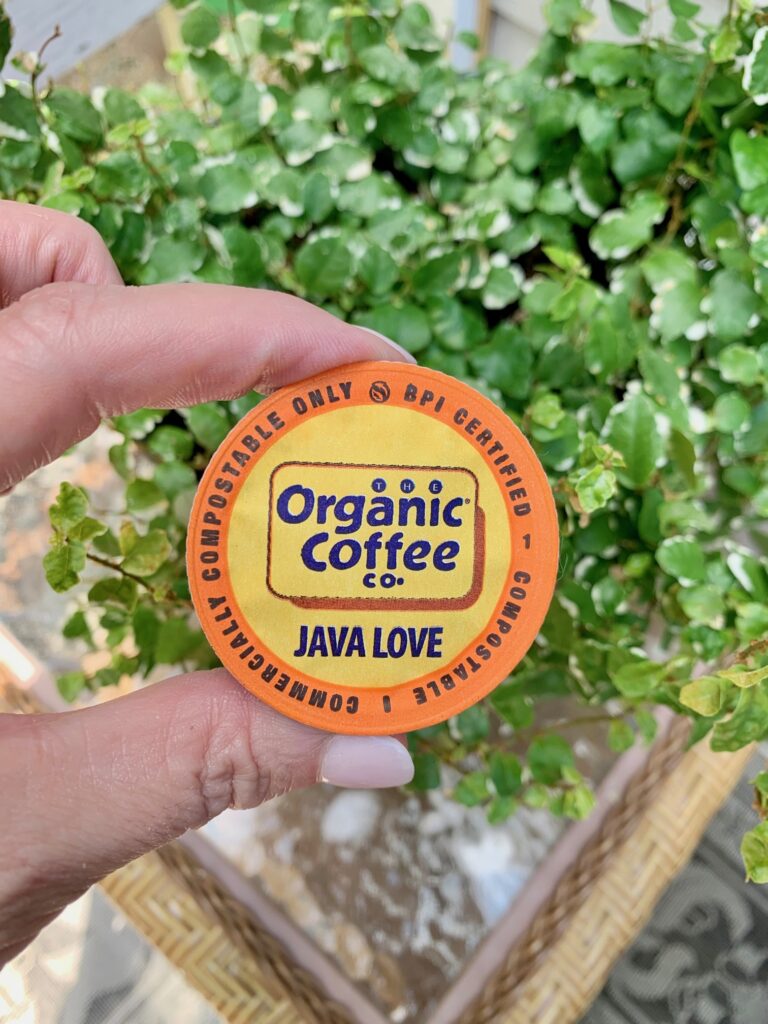
Some Better Fertilizing Options
So what are some better fertilizing options for indoor lavender plants? Organic fertilizers, such as composted manure, worm castings, and bone meal, are excellent choices because they provide a balanced mix of essential nutrients and improve soil structure. These organic materials can be added to the soil or used as a top dressing to provide a slow release of nutrients to the plant's root zone.

Commercial Fertilizer
Another option is to use a commercial fertilizer specifically formulated for lavender plants. These commercial fertilizers contain a balanced mix of essential nutrients, including nitrogen, phosphorus, and potassium, and are designed to provide the best results for lavender plant growth.
Homemade Fertilizer
Here's a simple recipe for a homemade fertilizer that you can use for your lavender plants:
Ingredients:
- 1 gallon of water
- 1 tablespoon of Epsom salt
- 1 tablespoon of baking soda
- 1 tablespoon of fish emulsion
Instructions:
- Mix all ingredients together in a large bucket or watering can.
- Stir well to dissolve the ingredients.
- Apply the fertilizer to the soil around the base of your lavender plants, being careful not to get it on the foliage.
- Water your lavender plants as usual.
This fertilizer provides magnesium and sulfur from the Epsom salt, alkalizes the soil with baking soda, and supplies additional nutrients with the fish emulsion. It's important to note that lavender plants do not require heavy fertilization, so use this homemade fertilizer sparingly, once every few months. Over-fertilizing can actually harm plants.

Did Someone Say Kitchen Scraps?
Lavender plants do not require a lot of nutrients, you can still use some kitchen scraps (organic matter) to provide them with additional nourishment. Here are a few examples of organic matter that can benefit lavender plants:
- Coffee grounds: Used coffee grounds are an excellent source of nitrogen, which is essential for plant growth. Simply add a sprinkling of coffee grounds around the base of your lavender plants and mix them into the soil.
- Banana peels: Banana peels are rich in potassium, which can promote strong root growth and flowering. Chop up banana peels and bury them in the soil around the base of your lavender plants. Did you know Basil loves banana peels?
- Vegetable scraps: Vegetable scraps, such as carrot tops and lettuce leaves, can be used to make a homemade compost that can provide your lavender plants with additional nutrients. Simply layer the scraps with dry leaves and grass clippings in a compost bin and wait for it to decompose into rich compost.
- Eggshells: Crushed eggshells are a good source of calcium, which can help prevent blossom end rot in plants. Sprinkle crushed eggshells around the base of your lavender plants.
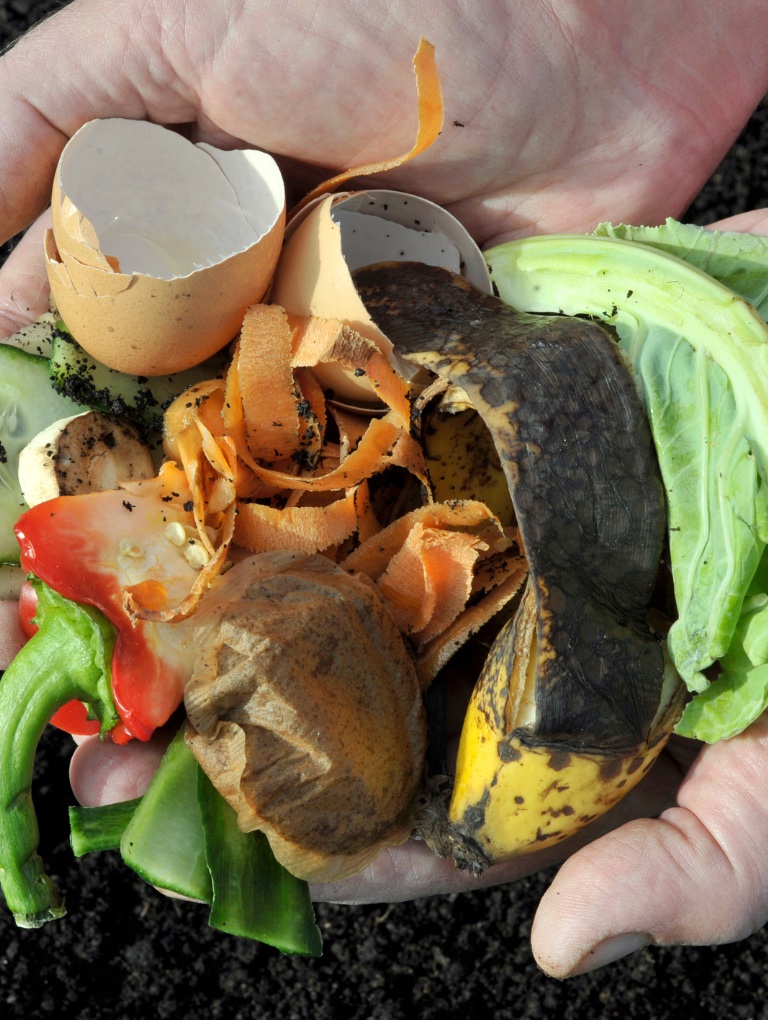
It's important to note that kitchen scraps should not be the sole source of nutrients for your lavender plants, and they should be used in moderation to avoid over-fertilizing.
Soil and Watering Requirements for potted Lavender Plants
Before we get too carried away with fertilizer, let's make sure our lavender have a solid foundation of well-drained soil and proper hydration! Proper watering and drainage are crucial to the growth of both outdoor and indoor lavender plants. Lavender plants require well-drained, sandy soil and do not tolerate soggy conditions.
Good drainage prevents water from sitting around the roots, which can lead to root rot. To ensure good drainage, use a potting mix that is specifically formulated for indoor plants and has good drainage properties.
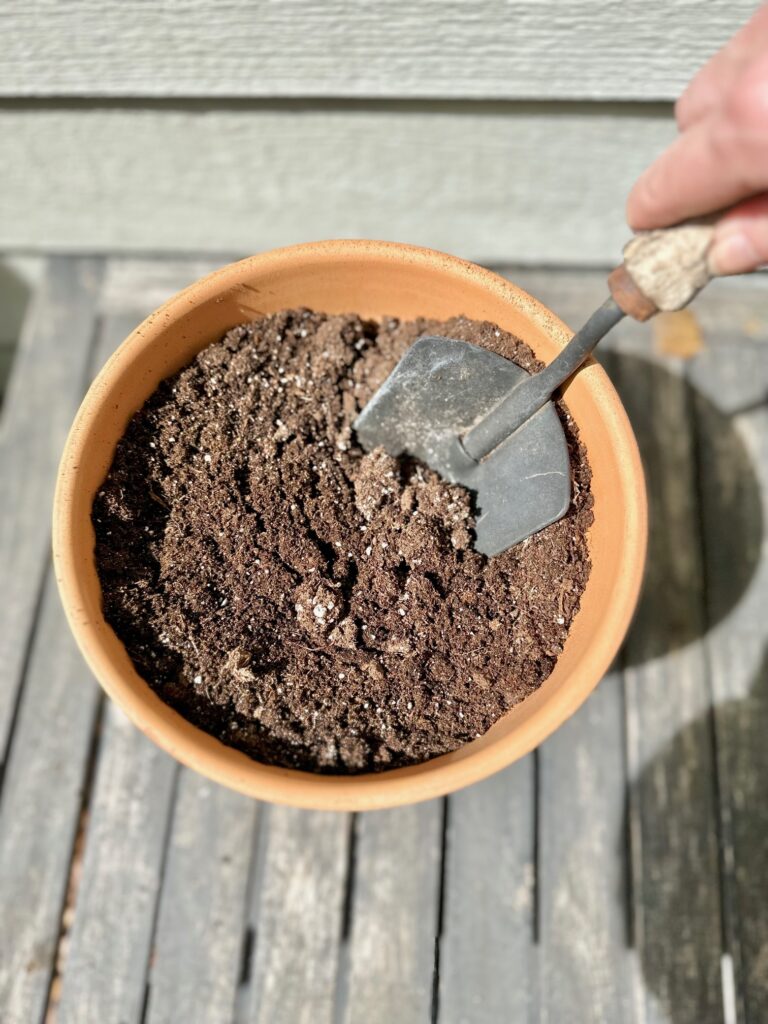
Lavender lovers, rejoice! We've curated a collection of lavender-centric posts to help you make the most of your fragrant harvest:
Lavender lovers, rejoice! We've curated a special collection of lavender-centric posts to help you transform your fragrant harvest into everyday luxuries. Start your aromatic journey with our elegant Lavender Sugar Cubes that add a floral sweetness to your favorite beverages, or create a spread that will impress at any gathering with our delicate Blossom Herb Butter. For an instant home refresh, our Summer Simmer Pot fills your space with lavender's calming essence throughout the day. Crafters will delight in our step-by-step guides for creating DIY Lavender Soap that turns your shower routine into a spa-like retreat, while our DIY Lavender Candle tutorial helps you capture lavender's soothing scent for cozy evenings at home. Each project offers a unique way to incorporate this beloved herb into your daily rituals.
Frequently Ask Questions About Lavender Fertilizer Requirements
The best time to fertilize indoor lavender plants is at the beginning of the growing season, which is typically in early spring. This will give your plants the necessary nutrients they need to grow healthy and strong into early fall.
Yes, you can use coffee grounds as a fertilizer for your indoor lavender plant, but it's important to use them in moderation. Coffee grounds can be acidic, so they work best for plants that prefer alkaline potting soil, like lavender. Use a small amount of fresh grounds or sprinkle a thin layer of dried coffee grounds on top of the soil. Be sure to mix the coffee grounds into the soil to avoid direct contact with the plant's roots. For more information on using coffee grounds for plants visit my Which Indoor Plants Like Coffee Grounds (and how I use my Keurig to make fertilizer post.
Compost made from organic materials like grass clippings, wood chips, and food waste is a great option for indoor lavender plants.
It's best to fertilize your indoor lavender plant every 4-6 weeks during the growing season. Too much fertilizer can lead to excessive foliage growth and root rot, so it's important to follow a regular fertilizing schedule and use a balanced plant fertilizer for healthy growth.
Lavender plants prefer slightly alkaline soil with a pH level between 6.5 and 8.0. You can test the pH of your soil using a soil test kit, which can be purchased at a garden center or online.
Water your lavender plant thoroughly after fertilizing, but be sure to allow the soil to dry out slightly before watering again. Overwatering can lead to root rot, so it's important to maintain good drainage and not give too much water. For more information on proper watering visit my How Often to Water Lavender Indoors: A Comprehensive Guide post.
If your lavender plants have pale or yellow lower leaves, stunted growth, or fewer lavender flowers than usual, it may be a sign that it needs more fertilizer. However, be sure to rule out other factors like overwatering or insufficient sunlight before assuming that the plant needs more fertilizer.

I hope you're finding this post helpful, it is the third post on Lavender care so be sure to check out my others:
How Often to Water Lavender Indoors: A Comprehensive Guide: Learn how to care for your indoor lavender plant in this comprehensive guide! Lavender is an excellent choice for indoor growing due to its low water requirements, but proper care is crucial. In addition to expert tips on watering, soil, lighting, temperature, and troubleshooting, discover the best lavender varieties for indoor growing. Plus, find out how to choose the right soil for your lavender plant, including how to increase alkalinity with items found around your home like eggshells and wood ash.
The Best Soil for Lavender: Tips for Creating the Perfect Mix: In this post Cooper has you covered on the importance of good soil for indoor lavender plants. Lavender plants require well-draining soil with good air circulation and can be prone to root rot if the soil is too wet. The surrounding soil's pH level should also be taken into account since lavender prefers alkaline soil with a pH level between 6.5 and 8.0. The post breaks down alkaline vs. acidic soil pH levels and explains the importance of avoiding poor soil for plant growth. It also provides steps to make a homemade lavender soil mix, including testing the soil pH, and discusses how to amend the soil with lime or sulfur to create a favorable growing environment for healthy lavender plants.

My complete guide to propagating lavender: This post shows you how to multiply your plants for free! I'll walk you through taking perfect cuttings (the timing makes all the difference), preparing them for success with my egg water secret, and providing the ideal conditions for root development. Whether you're planning a lavender border, herb garden, or simply want extras to share with friends, these simple propagation techniques give you an endless supply of fragrant plants without emptying your wallet.
Thanks for visiting the blog today for this post about lavender fertilizer requirements! If you would like to explore how to fertilize other herb plants please visit my What You Need to Know About Fertilizing Herbs post. From crafts to infused oils, the Herb Index has more DIY inspiration. I'm so glad you stopped by today!
Happy gardening!


